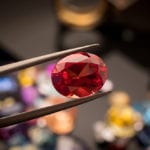 Technology
Technology  Technology
Technology  Humans
Humans 10 Everyday Human Behaviors That Are Actually Survival Instincts
 Animals
Animals 10 Animals That Humiliated and Harmed Historical Leaders
 History
History 10 Most Influential Protests in Modern History
 Creepy
Creepy 10 More Representations of Death from Myth, Legend, and Folktale
 Technology
Technology 10 Scientific Breakthroughs of 2025 That’ll Change Everything
 Our World
Our World 10 Ways Icelandic Culture Makes Other Countries Look Boring
 Misconceptions
Misconceptions 10 Common Misconceptions About the Victorian Era
 Mysteries
Mysteries 10 Strange Unexplained Mysteries of 2025
 Miscellaneous
Miscellaneous 10 of History’s Most Bell-Ringing Finishing Moves
 Technology
Technology Top 10 Everyday Tech Buzzwords That Hide a Darker Past
 Humans
Humans 10 Everyday Human Behaviors That Are Actually Survival Instincts
 Animals
Animals 10 Animals That Humiliated and Harmed Historical Leaders
Who's Behind Listverse?

Jamie Frater
Head Editor
Jamie founded Listverse due to an insatiable desire to share fascinating, obscure, and bizarre facts. He has been a guest speaker on numerous national radio and television stations and is a five time published author.
More About Us History
History 10 Most Influential Protests in Modern History
 Creepy
Creepy 10 More Representations of Death from Myth, Legend, and Folktale
 Technology
Technology 10 Scientific Breakthroughs of 2025 That’ll Change Everything
 Our World
Our World 10 Ways Icelandic Culture Makes Other Countries Look Boring
 Misconceptions
Misconceptions 10 Common Misconceptions About the Victorian Era
 Mysteries
Mysteries 10 Strange Unexplained Mysteries of 2025
 Miscellaneous
Miscellaneous 10 of History’s Most Bell-Ringing Finishing Moves
10 of the World’s Most Cursed Gemstones
Humans have always been attracted to the shimmering grandeur of diamonds and other gemstones. Gems have been used as status symbols throughout history, causing people to sometimes do anything to obtain them. Men and women have stolen, cheated, and even killed for these gems, so there are bound to be a few deep, dark secrets lying within. Some may be afraid of the curses these gemstones are said to bestow on their wearers, while others are not so much.
After all, diamonds are a girl’s best friend, right? Let’s look a little deeper at ten of the world’s most cursed gemstones.
Related: 10 Things You Didn’t Know About The British Crown Jewels
10 The Taj Majal Diamond
Elizabeth Taylor has notoriously loved diamonds, and her on-again-off-again husband, Richard Burton, was there to deliver. There’s no better way to show quite how much money you have than by bestowing a 68-carat diamond, is there? However, The Taylor-Burton diamond was not the only one Burton gifted to Taylor. He also purchased the 33-carat Krupp diamond in 1958—for $307,000 at an auction. And, if that’s not enough. He gifted her the Taj Mahal diamond for her 40th birthday in 1972.
The diamond was originally mined from South Africa and came into the hands of Shah Jahan, the man who built the Taj Mahal in the 17th century. The legend goes that he gave the necklace to one of his wives. However, another one of the wives, wanting the necklace for herself, put a curse on it.
Originally, the pendant was suspended by two silk cords that tied around the neck, like other famous Indian necklaces. However, the silk cord is now replaced by a gold and ruby chain designed by Cartier in 1972 in the style of the original woven silk. The gold woven chain is set with cabochon rubies and old mine-cut diamonds. It was auctioned in 2011 for $8 million[1]
9 Black Orlov Diamond
The Black Orlov diamond’s history is definitely a mysterious one. The legend goes that the Black Orlov originated in India in the 19th century when a Hindu monk stole the enormous black diamond from the head of a Brahma statue. Evidently, the Hindu god of creation wasn’t pleased by this, and the monk was murdered soon after.
Flash forward a century or so, and the diamond ends up in Russia and is obtained by Princess Nadia Vyegin Orlov, forever changing the diamond’s name to the Black Orlov. Years later, Princess Nadia leaped to her death from a skyscraper in Rome. Interestingly, hers wasn’t the first suicide the diamond caused. In 1932, J.W. Paris, a diamond dealer, bought the Black Orlov only to jump to his death, also from a skyscraper, soon after acquisition.[2]
8 The Delhi Purple Sapphire
According to legend, the Delhi Purple Sapphire (or the Cursed Amethyst) was stolen from the Temple of Indra during the Indian Rebellion of 1857. Colonel W. Ferris, a Bengal cavalryman, then brought the lifted stone to England, and this is where the trouble started for him and his family.
Ferris’s health soon deteriorated, and he lost everything that he possessed. His son inherited the stone and suffered the same fate, so he gave it away to a friend. Great friend he was… his friend committed suicide soon after receiving the “present.” Lucky for Ferris’s son, his friend willed the Delhi Purple Sapphire back to him.
In 1890, Edward Heron-Allen acquired the stone. Once he became the amethyst’s owner, a series of mishaps plagued him. Not realizing the effects of the stone, he gifted it to a friend, who was a singer. The singer immediately lost her voice forever. Heron-Allen, realizing the evilness of the stone, threw it into Regent’s Canal, praying that he would never see the thing again. Sorry, buddy. A dredger found the amethyst and, so very kindly, returned the stone to Heron-Allen, who then decided he would hide it in a bank lockbox so that it would never be found.
After his death in 1943, Heron-Allen’s daughter took the Delhi Purple Sapphire and gave it to London’s Natural History Museum, along with a note warning of its curse. The amethyst was put on display in 2007, but some believe the curse is still ongoing.[3]
7 Koh-I-Noor Diamond
Hindus believe the Koh-I-Noor diamond to be revered by their gods, despite the curse that it carries. Many male owners of the diamond were violently dethroned, proving that bad luck would plague any man who owned the Koh-I-Noor. Once the diamond ended up among the British crown jewels, only British queens wore it in order to escape its hex. Despite this, all the queens did outlive their husbands and even their children, so it is quite possible that the curse indirectly affected them as well.[4]
6 The Strawberry Leaf Tiara
The Strawberry Leaf tiara was designed by Prince Albert for his daughter, Princess Alice, but he, unfortunately, died of typhoid before the tiara could be fully completed. Despite this, the princess took the tiara with her to start her new life with her husband in Germany. Princess Alice then went on to experience the horrible losses of two of her children and died, at only 35 years old, from diphtheria, on the anniversary of her father’s death.
The tiara was willed to Alice’s surviving son, Ernst, and worn by his wife. Their only child died of typhoid, and the couple eventually divorced. Apparently, Ernst didn’t learn, and he bestowed the tiara on his second wife. Their son, Georg, married Princess Cecilie. On a plane trip to the UK, Cecilie went into premature labor, ultimately causing the plane to crash and kill everyone inside. Currently, the tiara belongs to the Foundation of the House of Hesse, where it is on exhibit but has never been worn by the family, possibly breaking the curse, for the time being.[5]
5 La Peregrina Pearl
The journey of La Peregrina begins in the Gulf of Panama, where it was found by an African slave. The pearl ended up in the Spanish Royal Crown jewels and the King of Spain, Philip II, sent the pearl to England as a gift to his future wife, Mary I, of England who would eventually be given the name “Bloody Mary.”
Bloody Mary was a devout Catholic and was given her nickname due to her prosecution of English Protestants. During her reign, she had over 280 Protestants burned at the stake. She wore her pearl while she witnessed the horrible executions.
Bloody Mary married her love interest, Philip, but he could either take her or leave her. He spent most of his time abroad during their short marriage. Mary then died of the flu at the age of 42, and Philip moved on and proposed to her sister, who politely declined.
After Mary’s death, the pearl returned to Spain and went through various members of the Spanish Royal Family, leaving inbreeding, affairs, and murder in its wake. Finally, in 1969, La Peregrina came into the ownership of none other than Richard Burton, who bought it at an auction for his wife, Elizabeth Taylor. Taylor redesigned the necklace based on a photo of Bloody Mary wearing the pearl. She obviously didn’t spook easily and kept the pearl until her death in 2011.[6]
4 Black Prince’s Ruby
The Black Prince’s ruby is said to have been stolen from its original owner, the Sultan of Grenada (Abu Sa’id), in 1366 by Don Pedro the Cruel (the King of Castile). After many battles between the two, Abu Sa’id traveled to Castile, planning to surrender to Don Pedro. Don Pedro had different plans, though, murdering Abu Sa’id and claiming the ruby for his own.
Possibly realizing the ruby’s evilness, Don Pedro didn’t hold onto it for long and instead bestowed it to the Black Prince. Don Pedro wasn’t able to escape the curse, though, and was murdered three years later by his predecessor.
Things didn’t go quite so well for the Black Prince either. He passed away from dysentery without ever inheriting the English throne. After the Black Prince’s death, the ruby passed through multiple lineages of kings who all died before their times. The Black Prince’s ruby eventually made its way to England to sit atop the Imperial State Crown, worn by Queen Elizabeth II. She lived to be 96 years old, so the curse didn’t seem to affect her. Quite possibly, it only causes death and misfortune to its male owners, like many other cursed gems. Currently, the Black Prince’s ruby is on display in the Tower of London, so check it out… if you dare.[7]
3 The Regent Diamond
It is rumored that the Regent diamond’s curse began when a slave found the 410-carat diamond in a mine in India in 1608. The slave decided to hide the diamond in a large wound he had which is super disgusting and sounds like an infection waiting to happen but also not the worst idea either because who would check there? Unfortunately, it didn’t work out well for the slave because he was eventually robbed and killed.
King Louis XVIII and Charles X both owned the diamond at one time and were either exiled or forced to abdicate the throne. The Regent diamond would also be worn on Marie Antoinette’s hat and Napoleon’s sword, and we all know how everything turned out for the two of them. Marie Antoinette was sent to the guillotine, and Napoleon was exiled and spent the last years of his life alone and living in horrible conditions.[8]
2 Eureka Diamond
The Eureka diamond is said to have been found by a Dutch farmer’s children in South Africa in 1886 near the Kimberley Mine. A neighbor, who had a background in geology, took an interest in the diamond and offered to buy it from them. Not knowing its worth, the farmer refused to accept payment for the diamond and gave it to his neighbor, who then took it to the Cape Colony’s chief meteorologist. He declared it to be the first diamond discovered in South Africa.
Despite the fact that nothing crazy ever happened to the diamond’s owners (that we know of), the diamond is thought to be cursed because of the deaths that occurred at the Kimberley Mine. It had the world’s largest diamond rush, and thousands of miners died from unsanitary living conditions, mining accidents, extremely high temperatures, and lack of fresh food and water… all in the name of the worldwide demand for these exquisite stones.[9]
1 The Hope Diamond
Last but not least of the world’s most cursed gemstones is the infamous Hope Diamond. The curse began in the 17th century when a gem trader, Jean-Baptiste Tavernier, stole the blue diamond from a Hindu statue. Once one of the priests discovered that the gem was missing, he put a curse on whoever dared own it. Apparently, Jean-Baptiste died of a fever soon after.
The Hope Diamond came into possession of King Louis XVI and Marie Antoinette, only for both of them to be guillotined. During the French Revolution, the diamond was stolen and re-cut by Wilhelm Fals, a Dutch jeweler. Wilhelm’s son then stole the diamond, murdered his father, and then killed himself, leaving the whereabouts of the Hope Diamond unknown for many years.
When the diamond resurfaced in the 1900s, many of its owners’ fates were still doomed. One owner, Simon Maoncharides, a Greek merchant, drove his car off a cliff. Evalyn Walsh McLean, an heiress to The Washington Post, bought the diamond in 1912 and actually put it on her dog’s collar! Must be nice. She then had to endure the deaths of two of her children, her husband leaving her for another woman, and the loss of her newspaper. Her surviving children sold the diamond to a jeweler who then donated it to the Smithsonian Institution in 1958 after his house burned down and he was in a serious car accident. The Hope Diamond now resides in the National Museum of Natural History in Washington, D.C.[10]








